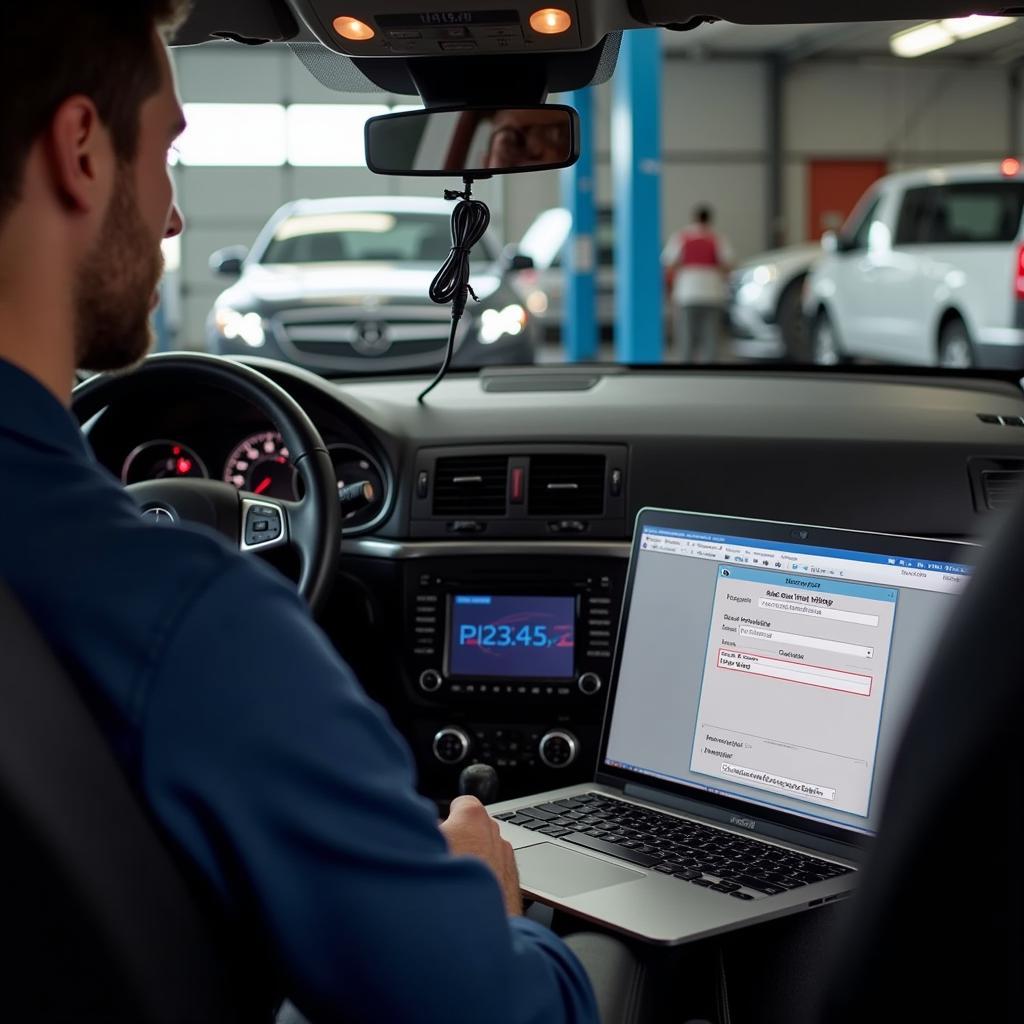Your cart is currently empty!

Understanding and Fixing the P2453 Ross-Tech Code
The dreaded P2453 Ross-Tech code. It’s a common enough issue that many car owners and mechanics have encountered it, leaving them scratching their heads. This article dives deep into the P2453 code, explaining what it means, why it happens, and most importantly, how to fix it. We’ll cover everything from diagnostic techniques using Ross-Tech software to potential solutions, empowering you to tackle this problem head-on.
What Does the P2453 Ross-Tech Code Mean?
The P2453 diagnostic trouble code (DTC) specifically refers to “Diesel Particulate Filter Differential Pressure Sensor Circuit Range/Performance.” In simpler terms, it means your vehicle’s computer has detected a problem with the sensor that measures the pressure difference across the diesel particulate filter (DPF). This sensor is crucial for determining how clogged the DPF is and when regeneration is required.
Causes of the P2453 Ross-Tech Code
Several factors can trigger the P2453 code. Understanding these potential causes can help you pinpoint the problem more efficiently:
- Faulty Differential Pressure Sensor: The most common culprit is a malfunctioning sensor itself. This could be due to internal damage, wear and tear, or exposure to extreme temperatures.
- Wiring Issues: Damaged or corroded wiring connecting the sensor to the engine control unit (ECU) can disrupt the signal, leading to the P2453 code.
- Clogged DPF: A severely clogged DPF can create an abnormally high pressure difference, which the sensor may misinterpret or be unable to measure accurately.
- Exhaust Leaks: Leaks in the exhaust system, especially before or after the DPF, can affect the pressure readings and trigger the code.
- Faulty ECU: While less common, a malfunctioning ECU can also be responsible for the P2453 code.
 Ross-Tech Diagnostic Process for P2453
Ross-Tech Diagnostic Process for P2453
Diagnosing the P2453 Code with Ross-Tech
Ross-Tech’s VCDS (Vag-Com Diagnostic System) software is an invaluable tool for diagnosing the P2453 code. Here’s a step-by-step guide:
- Connect the VCDS cable: Plug the cable into your vehicle’s OBD-II port and your laptop.
- Launch the VCDS software: Open the software and select the correct vehicle model.
- Scan for fault codes: Go to the “Fault Codes” section and click “Scan.” The P2453 code should appear if it’s present.
- Check measuring blocks: Navigate to “Measuring Blocks” and select the relevant blocks for the DPF differential pressure sensor. This allows you to monitor live data from the sensor.
- Perform output tests: The VCDS software allows you to perform output tests on the sensor to verify its functionality.
Fixing the P2453 Ross-Tech Code
Once you’ve diagnosed the problem using Ross-Tech, you can begin the repair process. Here are some potential solutions:
- Replace the differential pressure sensor: If the sensor is faulty, replacing it is the most straightforward solution.
- Repair wiring issues: Inspect the wiring harness for any damage or corrosion. Repair or replace any affected wires.
- Clean or replace the DPF: If the DPF is clogged, cleaning or replacing it may be necessary. Forced regeneration using Ross-Tech can sometimes clear minor blockages.
- Repair exhaust leaks: Identify and repair any leaks in the exhaust system.
- Update or replace the ECU: In rare cases, updating or replacing the ECU might be required.
“Regular maintenance, including proper DPF regeneration cycles, is key to preventing P2453 and other DPF-related issues,” advises John Miller, a seasoned automotive diagnostician with over 20 years of experience.
P2453 and Forced Regeneration with Ross-Tech
Ross-Tech’s VCDS software can initiate a forced DPF regeneration. This process burns off accumulated soot in the DPF, potentially resolving the P2453 code if caused by a partially clogged filter. However, it’s crucial to ensure other underlying issues, such as faulty sensors or exhaust leaks, are addressed first.
“While forced regeneration can be helpful, it’s not a magic bullet. Addressing the root cause of the P2453 code is essential for long-term reliability,” adds Sarah Chen, an automotive electronics specialist.
Conclusion
The P2453 Ross-Tech code can be a frustrating problem, but with the right knowledge and tools, it’s manageable. Utilizing Ross-Tech’s VCDS software allows for precise diagnostics and targeted solutions, empowering both car owners and professionals to effectively address this issue. Remember, accurate diagnosis is the first step towards a successful repair. For further assistance, feel free to contact us at +1 (641) 206-8880 and our email address: vcdstool@gmail.com or visit our office at 6719 W 70th Ave, Arvada, CO 80003, USA. We offer professional diagnostic and repair services using VCDS tools.
by
Tags:
Leave a Reply